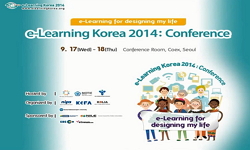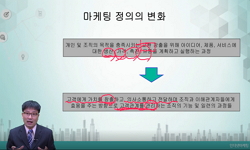The purpose of this study is to investigate affective factors that distinguish the high spoken English use group from the low spoken English use group among Korean EFL middle school students. This study focuses on the variables of communication strate...
http://chineseinput.net/에서 pinyin(병음)방식으로 중국어를 변환할 수 있습니다.
변환된 중국어를 복사하여 사용하시면 됩니다.
- 中文 을 입력하시려면 zhongwen을 입력하시고 space를누르시면됩니다.
- 北京 을 입력하시려면 beijing을 입력하시고 space를 누르시면 됩니다.
https://www.riss.kr/link?id=A107249650
- 저자
- 발행기관
- 학술지명
- 권호사항
-
발행연도
2020
-
작성언어
English
- 주제어
-
등재정보
KCI등재
-
자료형태
학술저널
-
수록면
109-141(33쪽)
- DOI식별코드
- 제공처
-
0
상세조회 -
0
다운로드
부가정보
다국어 초록 (Multilingual Abstract)
The purpose of this study is to investigate affective factors that distinguish the high spoken English use group from the low spoken English use group among Korean EFL middle school students. This study focuses on the variables of communication strategy, willingness to communicate, self-concept, motivation, and anxiety. A questionnaire on communication strategy, willingness to communicate, self-concept, motivation, anxiety, and the use of spoken English was designed and administered to 112 students of eighth grade in a province. The findings of the study are as follows: (1) the middle school students’ levels of extrinsic motivation and speaking anxiety were high, while the levels of self-concept, intrinsic motivation, and the use of spoken English were low, (2) the highest positive relationship was found between willingness to communicate (WTC) and the use of spoken English, while the highest negative relationship was observed between speaking anxiety and the use of spoken English, (3) willingness to communicate (WTC), academic self-concept, and communication anxiety were statistically significant factors that distinguished the high spoken English use group from the low spoken English use group. Based on the findings, some suggestions were made in regard to helping students improve their use of spoken English.
목차 (Table of Contents)
- 1. Introduction
- 2. Literature Review
- 2.1. Speaking Anxiety
- 2.2. Communication Strategies
- 2.3. Willingness to Communicate
- 1. Introduction
- 2. Literature Review
- 2.1. Speaking Anxiety
- 2.2. Communication Strategies
- 2.3. Willingness to Communicate
- 2.4. Academic Self-Concept
- 2.5. Motivation
- 3. Method
- 3.1. Participants
- 3.2. Instruments
- 3.3. Data Collection
- 3.4. Data Analysis
- 4. Results
- 4.1. Results from Descriptive Statistics
- 4.2. Results from Logistic Analysis
- 5. Discussions
- 6. Conclusion
- References
동일학술지(권/호) 다른 논문
-
Nominative Case Unmarking in Korean
- 현대문법학회
- Myung-Kwan Park
- 2020
- KCI등재
-
A Small Class of Multiword Verbs in English: A Prepositional Verb or Transitive Phrasal Verb?
- 현대문법학회
- Kyungchul Chang
- 2020
- KCI등재
-
청자존칭과 사물존칭은 왜 하위절에 나타날 수 없는가?1
- 현대문법학회
- 이두원
- 2020
- KCI등재
-
- 현대문법학회
- 진우현
- 2020
- KCI등재





 코리아스칼라
코리아스칼라






